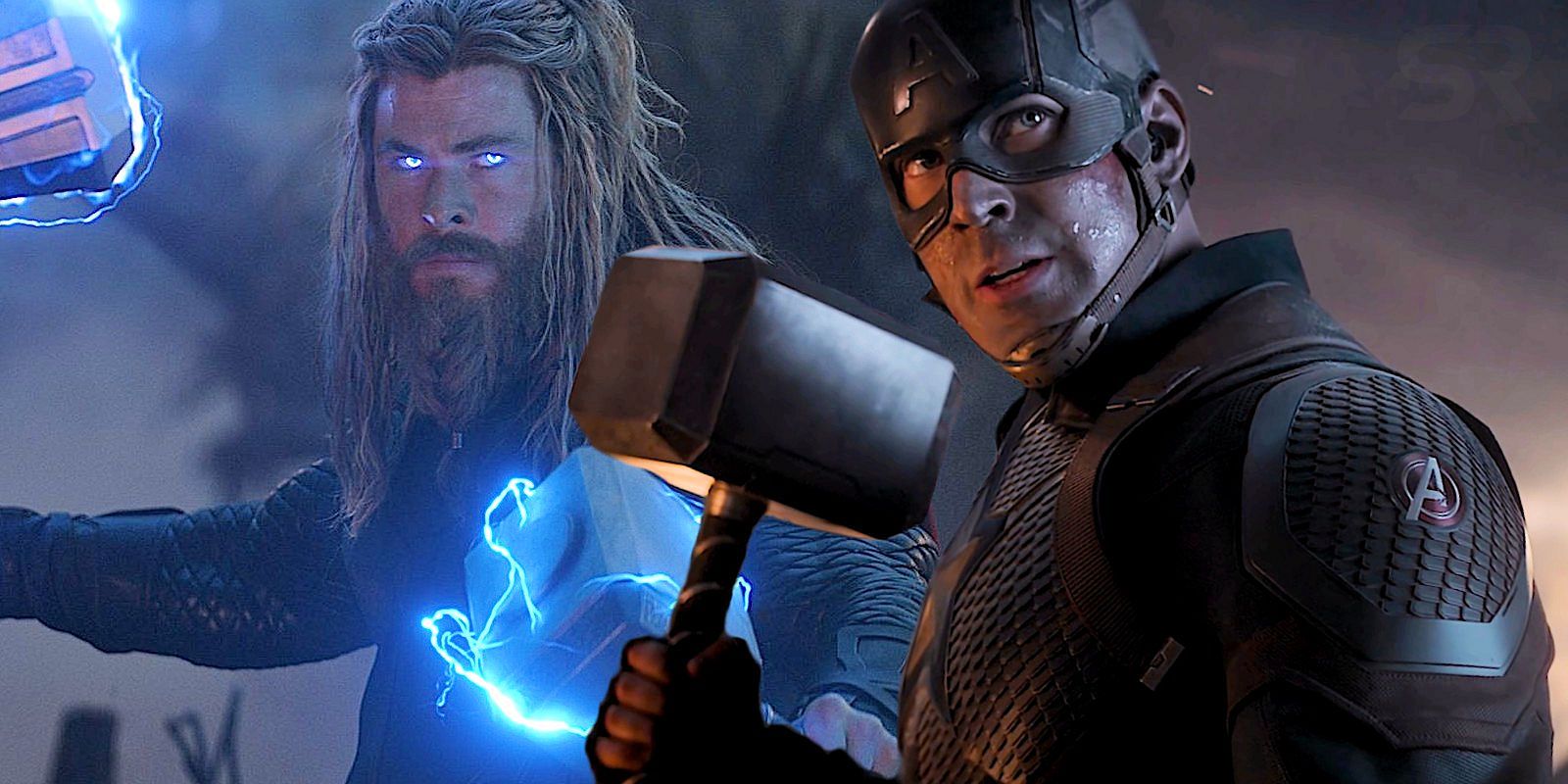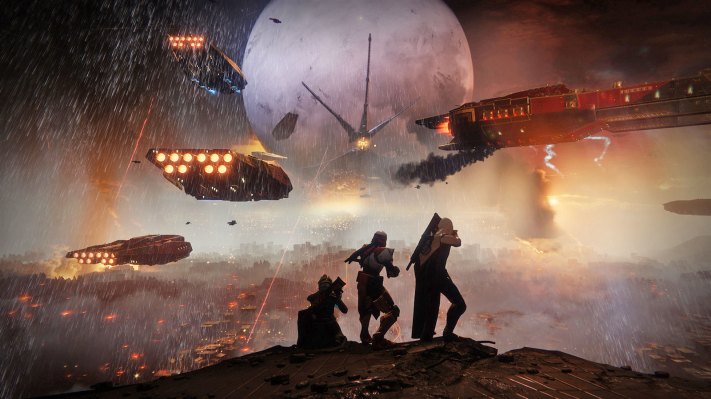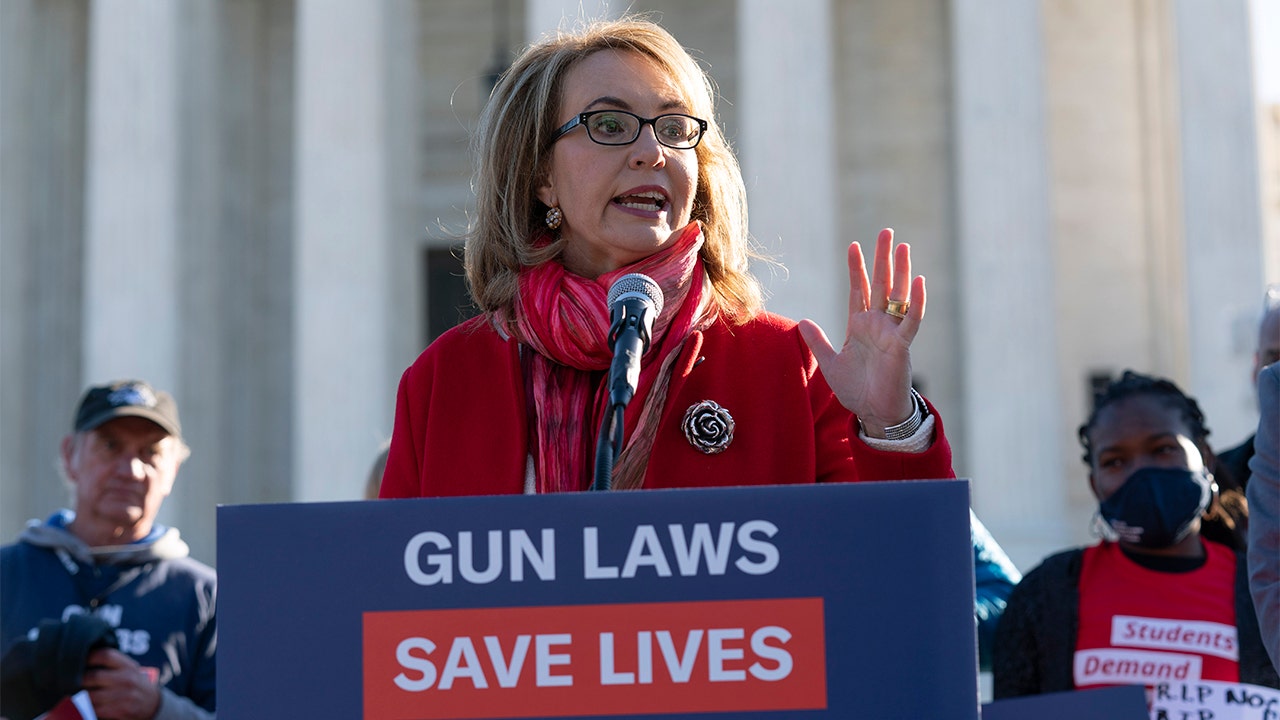Thor was worried Cap would lift Mjölnir in Age of Ultron, but was relieved in Endgame when Cap actually did it. Now, Jane has Mjölnir in Thor 4.
Warning! SPOILERS for Thor: Love & Thunder ahead.
Here’s why Thor looked so worried when Captain America tried to lift Mjölnir in Avengers: Age of Ultron, as well as how the introduction of Mighty Thor in Thor: Love and Thunder is the MCU Phase 4’s perfect callback to this iconic scene. The second Avengers film is not as well-received as its predecessors, but it has some of the memorable moments from the MCU’s original group of heroes. Its opening party sequence was particularly charming as it showed the characters relaxing and having fun with each other after they presumed that their mission was over. Most interestingly, this gave the movie an opportunity to see who among the Avengers was worthy to lift Thor’s hammer, an honor that’s traditionally reserved for those destined to become Marvel’s most powerful superheroes.
Almost every hero tried to see whether or not they were worthy to lift Mjölnir, but no one – not even Hulk, who can go toe-to-toe with the God of Thunder – could barely move it. That’s until Captain America tried his hand at the godly challenge. While he didn’t fully get it off the ground, he was able to ever-so-slightly shift it in place, eliciting a concerned look from Thor. This was a great foreshadowing for Cap’s eventual use of Mjölnir in Avengers: Endgame — but in that movie, Thor was ecstatic to see his fellow Avenger becoming worthy of the Asgardian weapon. So why was Thor even worried about the possibility just several years prior? Ultimately, this has to do with Thor’s character arc in the MCU.
Thor’s self-worth as a young god was largely defined by the hammer Mjölnir, which Thor somewhat overcomes in Endgame – but with the Thor: Love and Thunder cast being led by “female Thor” (read: Mighty Thor) in Jane Foster, Thor faced another challenging internal reckoning. For most, the question of who’s worthy to lift Thor’s hammer, whether in the comics or the MCU, is a fun bit of trivia to speculate about. However, for the God of Thunder himself, whose very worthiness to assume the throne of Asgard was measured by whether or not he was worthy to lift Mjölnir, it is no trivial matter. Since he was banished to Earth by Odin to learn humility, it has not been easy for Thor, even after he once again proved his worth. As the Thor: Love and Thunder trailer and final movie revealed, Thor’s journey of self-discovery is far from over. Moreover, Thor’s continuing story arc in Phase 4 of the MCU is a continuation of Captain America’s heroic legacy as the former leader of the Avengers.
Captain America Almost Stole Thor’s Thunder
Back in Age of Ultron, a young and cocky Thor still hadn’t realized that being the King of Asgard wasn’t what he truly wanted, and in contrast, Captain America had a singular and worthy goal in mind: defending human life. Thor firmly believed that he was destined to rule Asgard, and he equated his self-worth with the idea that he would one day be like his father — which is why he was so threatened by the prospect of Captain America stealing his thunder. Notably, Cap actually wasn’t that affected by the fact that he was almost worthy to lift Thor’s hammer. In hindsight, this isn’t surprising, especially since Captain America retired after Avengers: Endgame and promptly put the Infinity Stones back in their respective timelines, proving that Cap never desired godly power. Besides, this was the man who instantly jumped on a fake grenade to protect people he barely knew who were mean to him. Although Cap’s internal conflicts prevented him from being fully worthy to lift Mjölnir during Age of Ultron, Cap really almost pulled off stealing Thor’s thunder.
This was a great lesson for Thor, as witnessing Captain America’s leadership and heroism firsthand eventually gives Thor a more complete picture of what being worthy means. At the time, Thor cockily offered anyone to be the ruler of Asgard if they successfully lifted his hammer, and by almost calling Thor’s bluff, Cap actually helped Thor find his own heroic path. As Thor later finds out the hard way, even being worthy to lift Thor’s hammer did very little to calm Thor’s grief in Avengers: Infinity War after he failed to stop Thanos. At this point in his character arc, Thor still wasn’t confident with himself, and there’s an argument to be made that even after Endgame, this remains to be the case.
Avengers: Endgame‘s directors and writers have contradictory views when asked whether or not Captain America was already capable of wielding Mjölnir in Age of Ultron. Joe and Anthony Russo claim that he has always been worthy, only opting to not reveal it at that time so as not to offend Thor. Meanwhile, Christopher Markus and Stephen McFeely say that Steve Rogers was genuinely unable to lift the hammer as he was still being held back by lying to Iron Man about Bucky Barnes killing his parents. Joss Whedon, who wrote and directed Age of Ultron, has yet to weigh in on the matter of who’s worthy to lift Thor’s hammer.
Thor: Love And Thunder Repeats Age Of Ultron’s Captain America Mjolnir Scene With Mighty Thor
Before Thor: Love and Thunder, Jane last appeared in Thor: The Dark World – and somewhere along the line, she became worthy of wielding Mjölnir, just like Captain America. Whether intentionally or not, Taika Waititi turning Jane into Mighty Thor recalls that fateful scene in which Cap rocks Thor’s world by slightly moving his hammer. Marvel Comics and the MCU fleshed out a brilliantly tragic twist in the fate of Jane Foster, who gets diagnosed with cancer and undergoes chemotherapy. However, any positive effects of the cancer treatment are blocked by her transformations into Mighty Thor, which also make the cancer worse. Jane’s willingness to sacrifice her health in order to wield the power to protect others was what made her worthy of Mjölnir in the comics. In the MCU, Thor unwittingly bestows worthiness on Jane by asking Mjölnir to protect her. While many characters and elements in MCU’s Phase 4 make Cap’s Mjölnir scenes more special, Jane Foster stands out not only as the first woman to wield Thor’s power but also as a hero potentially more worthy of wielding Mjölnir than both Thor and Captain America.
Thor has mostly outgrown the unhealthy practice of measuring his self-worth through Mjölnir, but this was put to the test by Jane Foster’s Mighty Thor. The conflict never resulted in a Mighty Thor vs. Thor fight – they ganged up on Gorr instead and rekindled their doomed romance. But through Jane’s female Thor, Marvel continued to push the God of Thunder’s character development. While Captain America helped Thor begin to come to terms with his relationship with Mjölnir in Avengers: Age of Ultron, Mighty Thor unearthed the extent of Thor’s personal growth in MCU Phase 4. With two Gods of Thunder in one movie, Love and Thunder showed everything Mjölnir can do – even when fractured and repaired – and not just in terms of its Asgardian powers, either. Mjölnir’s fate inevitably affected Thor’s perspective as a superhero, and his renewed sense of self showed in his reclamation of Mjölnir after Jane’s passing at the film’s conclusion.
- Black Panther: Wakanda Forever/Black Panther 2 (2022)Release date: Nov 11, 2022
- Ant-Man and the Wasp: Quantumania (2023)Release date: Feb 17, 2023
- Guardians of the Galaxy Vol. 3 (2023)Release date: May 05, 2023
- The Marvels/Captain Marvel 2 (2023)Release date: Jul 28, 2023
About The Author























































